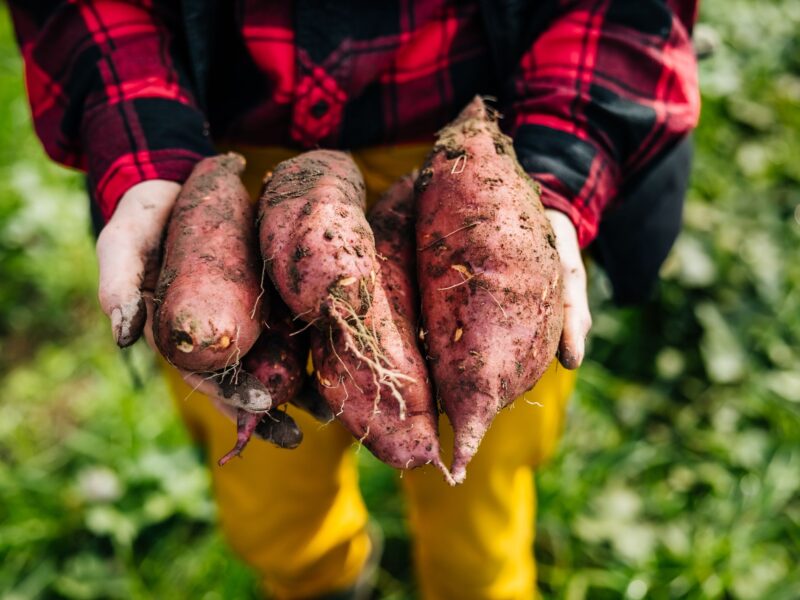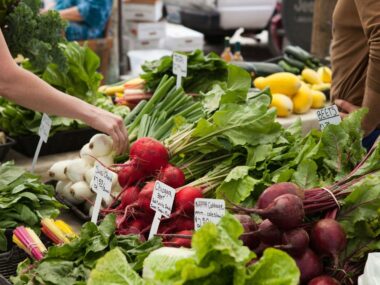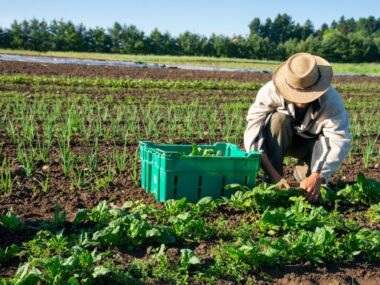Comprehensive Guide to Sweet Potato Cultivation in
the Rainy Season
Overview of Sweet Potatoes
Sweet potatoes (Ipomoea batatas) are a versatile, nutritious root crop that is widely cultivated for their edible tubers. They are an important food source in many tropical and subtropical regions and can be used for food, animal feed, and industrial applications. Sweet potatoes are known for their high vitamin A content and adaptability to various growing conditions.

Benefits of Sweet Potato Cultivation
- Nutritional Value: Rich in vitamins A and C, dietary fiber, and essential minerals.
- Versatility: Can be consumed in various forms, including baked, boiled, fried, or processed into flour and other products.
- Resilience: Tolerates a range of soil types and climatic conditions, making it a reliable crop in diverse environments.
- Economic Value: Provides income for smallholder farmers through fresh tuber sales and value-added products.
Varieties of Sweet Potatoes
- Orange-Fleshed Sweet Potatoes: High in beta-carotene, contributing to their rich vitamin A content.
- White-Fleshed Sweet Potatoes: Common in Asia and Africa, less sweet than orange-fleshed varieties.
- Purple-Fleshed Sweet Potatoes: Rich in antioxidants, particularly anthocyanins.
- Yellow-Fleshed Sweet Potatoes: Moderately sweet with varying levels of beta-carotene.
Climate and Soil Requirements
- Climate: Sweet potatoes thrive in warm, tropical to subtropical climates with temperatures between 21°C and 26°C.
- Rainfall: Requires well-distributed rainfall between 750 mm and 1500 mm annually. Too much rain can cause waterlogging, while too little can stunt growth.
- Soil: Prefers well-drained, sandy loam to loamy soils with a pH of 5.5-6.5. Sweet potatoes can grow in less fertile soils but benefit from fertile, well-structured soils.
Stages of Sweet Potato Cultivation
- Land Preparation: Clear the land of weeds and debris. Plow and harrow to create a fine, well-drained seedbed. Raised beds or ridges can improve drainage.
- Planting Material Selection: Use healthy, disease-free vine cuttings or slips. Select varieties suited to local growing conditions and market preferences.
- Planting Methods:
- Vine Cuttings: Plant 20-30 cm long vine cuttings with 3-5 nodes in moist soil. Insert cuttings vertically or at an angle, burying 2-3 nodes.
- Slips: Transplant slips, ensuring the roots are covered with soil.
- Water Management: Maintain consistent soil moisture, especially during the first few weeks after planting. Supplement natural rainfall with irrigation if necessary.
- Fertilization: Apply balanced fertilizers based on soil tests. Sweet potatoes benefit from organic matter and fertilizers rich in nitrogen, phosphorus, and potassium.
- Weed Control: Weed regularly during the first 2-3 months. Use mulching or cover crops to suppress weed growth and conserve soil moisture.
- Pest and Disease Management: Monitor and manage common pests like sweet potato weevils, aphids, and diseases such as root rot and leaf spot.
- Harvesting: Typically occurs 90-150 days after planting, depending on the variety and growing conditions. Harvest when tubers reach the desired size.
- Post-Harvest Processing: Involves curing, cleaning, and storage to ensure the sweet potatoes are ready for market and consumption.
Water Management in Sweet Potato Cultivation
Effective water management is crucial for sweet potato cultivation:
- Irrigation Systems: Use drip or sprinkler systems to maintain adequate soil moisture, particularly during dry spells.
- Rainfall Harvesting: Collect and store rainwater for supplemental irrigation.
- Drainage Systems: Implement proper drainage to prevent waterlogging, which can lead to root rot and other issues.
Fertilization Practices
Balanced fertilization is key to maximizing sweet potato yield:
- Nitrogen (N): Essential for vegetative growth. Apply nitrogen fertilizers at planting and during the growing season.
- Phosphorus (P): Important for root development and energy transfer. Apply phosphorus fertilizers based on soil tests.
- Potassium (K): Enhances disease resistance and overall plant health. Apply potassium fertilizers as needed.
- Micronutrients: Ensure adequate levels of micronutrients like zinc, magnesium, and sulfur for optimal growth.
Common Pests and Diseases
- Sweet Potato Weevils: Insects that bore into tubers, causing significant damage.
- Control: Use insecticides, resistant varieties, and proper field sanitation.
- Aphids: Small insects that suck sap from the plant, reducing vigor and transmitting diseases.
- Control: Use insecticides, natural predators like ladybugs, and resistant varieties.
- Root Rot: A fungal disease that causes rotting of roots and tubers.
- Control: Ensure proper drainage, use disease-free planting material, and apply fungicides if necessary.
- Leaf Spot: A fungal disease that causes spots on leaves, reducing photosynthesis.
- Control: Use fungicides, resistant varieties, and ensure proper field sanitation.
Harvesting and Post-Harvest Practices
- Timing: Harvest when tubers reach the desired size and skin has hardened. Delayed harvesting can lead to oversized, fibrous tubers and reduced quality.
- Methods: Harvest manually or with mechanical equipment, depending on the scale of cultivation.
- Curing: Cure harvested tubers at high humidity (85-90%) and temperature (29-32°C) for 4-10 days to heal wounds and improve storage life.
- Cleaning and Grading: Remove soil and debris from tubers. Grade based on size and quality for market readiness.
- Storage: Store cured sweet potatoes in cool, dry conditions (12-15°C) to prevent spoilage and sprouting.
Sustainable Sweet Potato Cultivation Practices
- Crop Rotation: Rotate sweet potatoes with other crops like legumes or cereals to break pest and disease cycles and improve soil health.
- Cover Crops: Plant cover crops during the off-season to protect and enrich the soil.
- Integrated Pest Management (IPM): Combine biological, cultural, and chemical methods to manage pests sustainably.
- Organic Farming: Avoid synthetic chemicals, using organic fertilizers and natural pest control methods.
Innovations in Sweet Potato Farming
- High-Yielding Varieties (HYVs): Developed to increase productivity and resist diseases.
- Genetically Modified (GM) Sweet Potatoes: Engineered for traits like pest resistance and improved nutritional content.
- Precision Agriculture: Uses technology like GPS, drones, and satellite imagery for efficient field monitoring and management.
- Conservation Tillage: Reduces soil erosion and conserves moisture by leaving crop residues on the field.
Economic Importance of Sweet Potatoes
- Global Trade: Major producing countries include China, Nigeria, Tanzania, and Uganda. Importing countries include the USA, the European Union, and Japan.
- Employment: Provides livelihoods for millions of farmers and workers in related industries.
- Food Security: Essential for the food security of many developing nations, providing a crucial source of nutrition and income.
Environmental Considerations
- Water Use Efficiency: Implement practices like drip irrigation to conserve water.
- Soil Health: Use crop rotation and organic amendments to maintain soil fertility.
- Climate Change Adaptation: Develop and adopt resilient sweet potato varieties and farming practices to cope with changing climate conditions.
Challenges in Sweet Potato Cultivation
- Climate Variability: Unpredictable weather patterns can affect water availability and crop health.
- Pest and Disease Pressure: Requires constant monitoring and management.
- Labor Shortages: Mechanization and improved labor practices are needed to address this issue.
- Market Fluctuations: Prices can be volatile, impacting farmer income.
Conclusion
Sweet potato cultivation during the rainy season presents a unique opportunity to leverage natural water resources for optimal growth. By understanding the requirements, best practices, and challenges associated with sweet potato farming, farmers can enhance productivity, ensure food security, and contribute to the global sweet potato supply. Sustainable practices and technological innovations will play a crucial role in meeting the future demands of sweet potato production while preserving environmental health.










